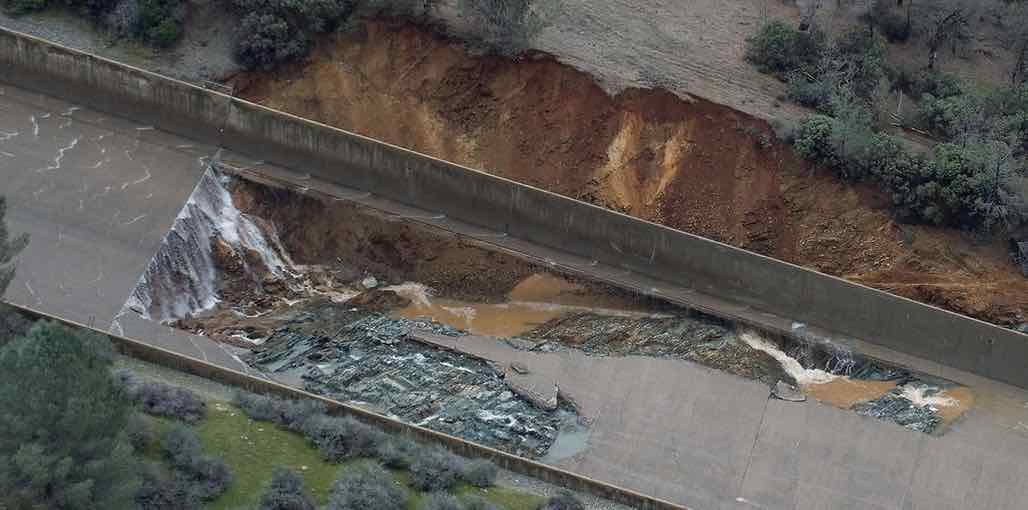The equivalent of 300 hundred farms' annual water usage was lost EVERY DAY during the Oroville Dam emergency.
Top image: Oroville Dam spillway damage with active water flow. Source: KQED
The Oroville Dam is a key piece of California's water infrastructure. At 770 feet, it's the tallest dam in the United States and forms one boundary of massive Lake Oroville, the second-largest man-made lake in California that can hold 3.5 million acre-feet of water. The power plant fed by this dam alone can produce 812 megawatts (MW), enough to power about 650,000 homes. And water from Lake Oroville's reservoir helps irrigate about 755,000 acres of California farmland while providing municipal drinking water to over 25 million people.
In February of 2017, a major incident took place here that affected millions of Californians and had major repercussions in California's agricultural industry.
A crisis builds
Beginning in October 2016, an epic and unprecedented series of 30 storms passed over the California. These storms radically reversed the worst-ever drought in California's history that stretched for five years. As storms continued to wet the state, aquifers refilled. Dry soils became very wet. All of the new rainfall had nowhere to go but straight to watercourses including Lake Oroville.
This massive amount of water and saturated soil was too much even for the Oroville Dam spillway to take. Without emergency sandbags from helicopters and nonstop work by Oroville Dam's engineers, the spillway would have failed. And failure would have meant the unthinkable: a catastrophic tidal wave of millions of gallons of water and debris bursting into the town of Oroville just below the dam.
Huge amounts of water are lost
During the Oroville Dam crisis, in an attempt to slow erosion of the emergency spillway, engineers increased the water flow over the main dam spillway to 100,000 cubic feet per second (cfs). But what does 100,000 cubic feet of water really mean? To put that large number into perspective, it's equivalent to:
- 741,800 gallons (roughly the volume of an Olympic swimming pool)
- 2.3 acre-feet (roughly the volume delivered in an 8-hour irrigation set by a 150HP well pump)
And that's just the amount of water cascading over the spillway every second! Discharging water at that rate for an entire day would equal about 198,000 acre-feet. That's as much water as 300 farms might use over an entire year.
What solutions do we have?
One of the real tragedies of the Oroville Dam incident was simply the water that could've gone to farms but literally cascaded down the spillway. Water is a precious resource in California. We need to use it efficiently so that future generations can benefit as much as we have.
With Wexus' software platform, California's growers have the tools to effectively manage both water and energy usage to get more drops and watts per crop, and are ready when unpredictable water emergencies like the Oroville Dam incident strike.
If you’d like more information about how Wexus’ software platform can drive efficiency across your farming operation, click here to sign up for a free demo or email us at info@wexusapp.com.
Nathan Taylor, P.E. is an Energy Engineer with Wexus Technologies, Inc. Nate eats energy and water data for breakfast and is an expert at dodging car and foot traffic while riding his scooter in San Francisco.
